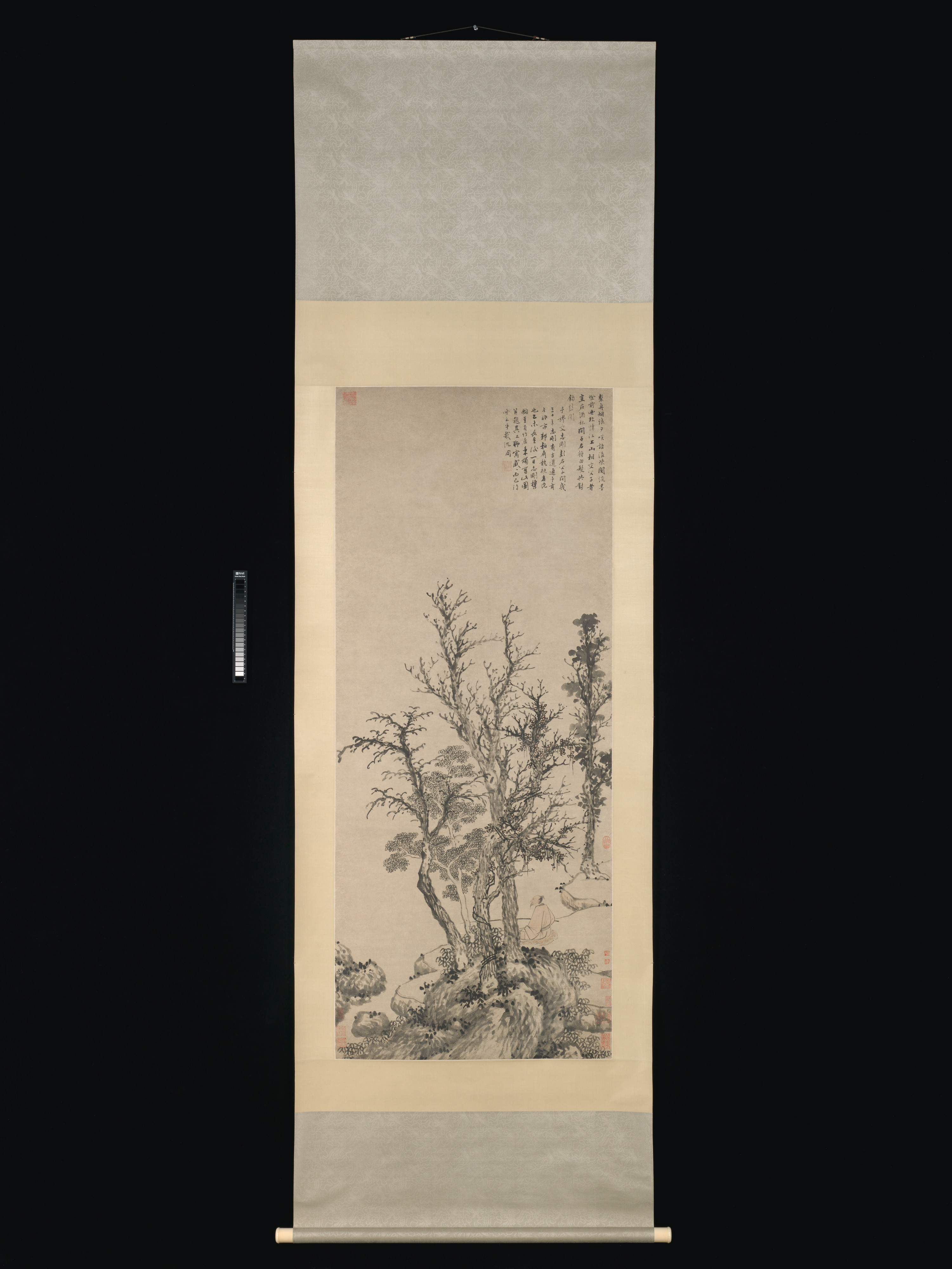Silent fisherman in an autumn wood
Shen Zhou Chinese
Not on view
Born to a family of scholars and artists, Shen Zhou chose to lead a life of quiet retirement at home, pursuing the scholar-artist ideal of practicing painting and calligraphy as a form of self-cultivation. Although he did not turn to painting until he was nearly forty, he was later heralded as the father of the Wu school.
Painted when Shen Zhou was forty-eight, Silent Angler in an Autumn Wood is a relatively early work. Nevertheless, it exhibits the kind of bold brushwork and composition that typify the artist's mature style. Eliminating any background so that the screen of foreground trees fills the picture plane, Shen Zhou maximized the impact of the surface patterns made by his blunt, powerful brushstrokes.
According to Shen Zhou's inscription, the painting was done for two old friends, father and son, who had come for a visit. In both his painting and the accompanying poem, Shen used the image of the fisherman to symbolize the pleasures of scholarly retirement. To emphasize that such pleasures are a state of mind, Shen's angler, dressed in a scholar's robe and seated on a leopard skin, holds a pole that has neither hook nor line.
Due to rights restrictions, this image cannot be enlarged, viewed at full screen, or downloaded.
This artwork is meant to be viewed from right to left. Scroll left to view more.



